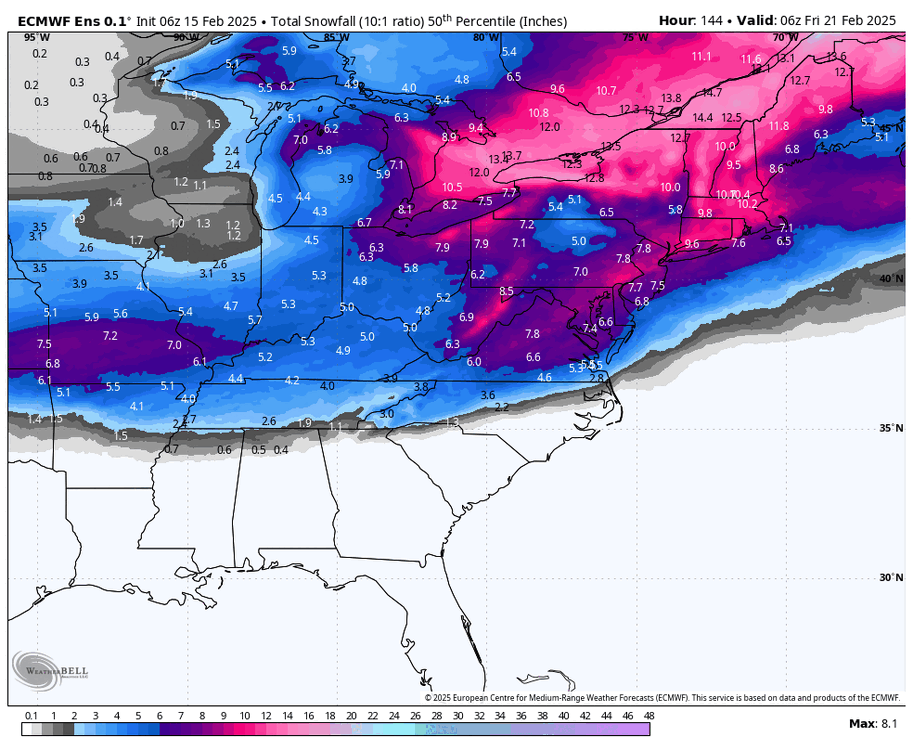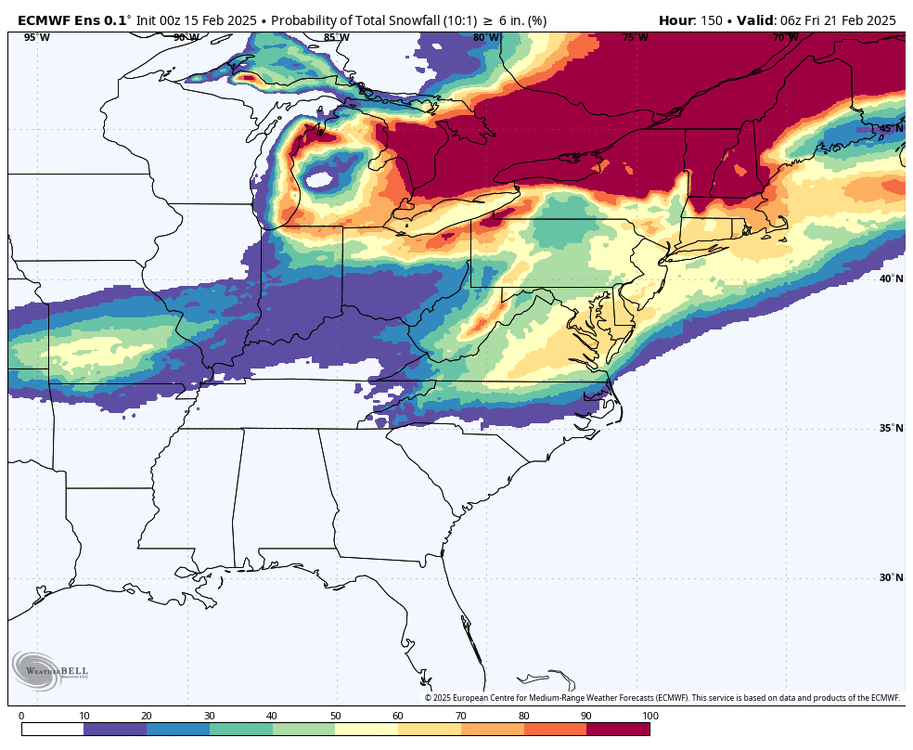-
Posts
26,582 -
Joined
-
Last visited
Content Type
Profiles
Blogs
Forums
American Weather
Media Demo
Store
Gallery
Everything posted by psuhoffman
-
@mitchnick uk ens should be rolling in about now. Curious if they reflect the more amped op run.
-
Im not in this camp. If I get 12” I’m ok. But there are people up in this area that want a storm to “settle the score” and bring this area to where we “should be” with regard to climo as those southeast of us who are at 110% of normal already. So…this area up here averages like 30-40” depending on exact location and most have had 10-20 so they need like a 20” snow to get to 110% and they need everyone SE of 95 to not get more snow or it’s still “not fair” because then they have 120%. Again I’m not in that camp. But I get it. We’ve been worse wrt climo quite a few years now here. Some are waiting for a storm to settle the score. They want a jack here not another storm where way more snow falls to our southeast.
-
But it caved then brought it back along with the euro so how do you use that? lol
-
I’ll start it whenever you all give the word One period that’s popped up in the analogs a few times was March 13 2017. And it’s one of the best h5 matches to how the TPV behaves here. People don’t remember that fondly because it ended up a sleet bomb for most but this time we have a colder antecedent airmass and 2 weeks earlier so that might work. It was an amped as F system that Tucked right against the Delmarva similar to the ukmet track we just saw.
-
So I have plans next Thursday to take a rear wheel drive delta 88 Oldsmobile with cheap overused worn out factory tires on a leisurely cruise around the DMV. I thought I’d start with a drive down 15 to 66 the stop at Manassas because someone told me back in the 90s “they’re a cut above the rest”. Then I’ll take back roads up to 50 and get on 50 east to the Fairfax County PKWY waving to my brother as I pass Chantilly then stop for a cup of coffee in reston town center with my sister. After that I’ll hop on the Toll road to 495 and do a loop around the beltway because 5 lanes of constantly merging traffic sounds like a fun afternoon. After a full loop it should be about 5 and I’ll pop on 270 north because that should be a joy that time of day. 270 will get me to 27 which I’ll causally ride along the parrs ridge through exposed fields cause why not, all they way to Manchester. What should I expect?
-
-
He’s losing something alright
-
@Ji and yea the ens are 10-1 and lower resolution which you have to take into account when comparing to the op.
-
6z was significant better No one posts them (probably because they are almost never as good as the mean maps because these aren’t skewed by outliers) but the mode and prob maps are more important and shifted the jack from SE to right up or even NW of 95. Mode 6” prob
-
I have a quarter mile driveway if you include the part shared with 5 neighbors. One of them has a tractor and will plow it but if they aren’t home or I need to get out before they get to it no way I’m shoveling that ish.
-
You got a truck? Come borrow my snowblower
-
For now de-amplifying as this window amplifies more. There is a see saw to this. Conservation of energy. For now guidance has a weaker clipper like wave now. But once we get closer don’t be shocked if it pops back up.
-
Damage is done. Colds been dumped into the CONUS and so long as we don’t get a pac puke flood and the trough is in the east inertia will keep is cool for a bit. Looks like extended guidance breaks the pattern around March 10 Which times up with the MJO likely getting back to hostile phases. I think any warm up before then is fleeting like a day before a front. After March 10 I can see is going into full spring though with a SER once the MJO gets out of cold phase.
-
-
It was the h5 and speed of 12z but the progression of 18z wrt developing the arctic wave and rolling through with that feature. It was the best of both.
-
Tell us again
-
Ya know I’ve argued for years the 12k NAM just ads noise and confusion. Sure once in a blue moon it scores a coup but 90% of the time when it’s off on a tangent it’s wrong. We’d be better if it just didn’t exist. 3k ads value because as long as it matches the globals on Synoptics it can see features they can’t. But im getting to that point with the GFS. Since the last major upgrade that fixed some of the early biases they were causing the new euro after its core upgrade to be jumpy, it’s been a rock. Of cores it’s not always right, but it’s right or closer to right often enough that the other models tend to just add confusion unnecessarily. And when another model has been closer on rare occasions it’s almost never been the gfs. Maybe one fluke run here or there but what good is that because you don’t know what run is right. It’s sad but bc the euro and to a lesser extent the Ggem have made significant improvements and the GFS has not kept up, it’s becoming kinda obsolete right now to me. I feel like I’d better off not even looking at it most of the time. Wonder if NCEP sees this too and has any plans to do anything about it. I dont doubt we have the knowledge. I think it must be a funding issue.
-
GFS is one thing you know who could cancel and I wouldn’t mind
-
I’m worried about the GFS
-
Or he’s busy arguing with everyone on social media about what the NAO is Love ya Chuck.
-
Good that means he can’t find any reason to tell us it’s not happening.
-
Tuckity tuck tuck
-
I can abide by this run
-
I can’t do pbp I like to digest each frame and analyze and you Fers just jump right to the colorful maps lol
-
Yup












